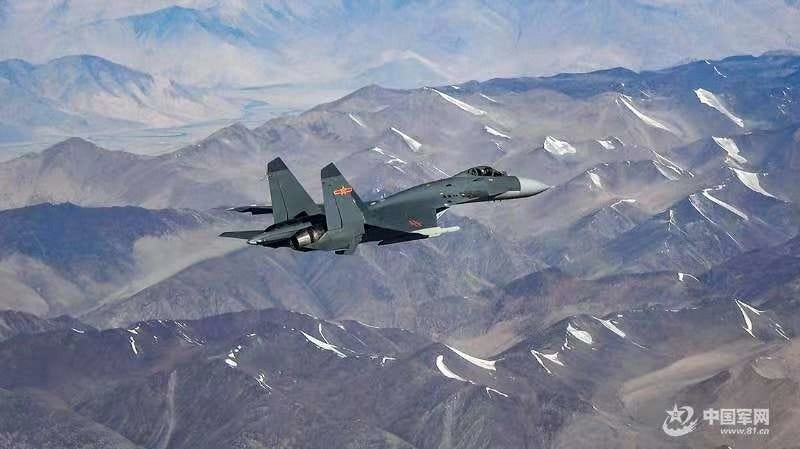Asia Communique
Weekend Edition: Japan Warns Companies in Taiwan About Invasion Risk | Taiwan Concludes Han Kuang Exercise | Beijing Rejects H20 Chip Deal Link | India and RIC Hype
This is your action packed weekend edition of Asia Communique coming to you from Taipei!
On weekdays, I’ll be sharing both a morning and evening edition of the newsletter. Over the weekend, you’ll receive a special weekend edition.
Feel free to reach out anytime with thoughts or feedback.
A Shenyang J-16 fighter jet from China’s Western Theatre Command seen conducting drills near the India-China border as seen in a photo published on July 10.
Japan’s Quiet Warning to Businesses in Taiwan — “You’re On Your Own”
A quiet but consequential message is circulating in boardrooms from Tokyo to Taipei: Japanese firms operating in Taiwan may not be able to count on their government for help if a crisis breaks out.
According to Financial Times, Japanese officials have been privately telling companies for several years that they should not expect military assistance in evacuating staff from Taiwan in the event of a Chinese attack. The rationale? Japan’s pacifist constitution, its lack of formal ties with Taipei, and the political near-impossibility of getting China’s consent for such operations.
The warnings, which have not been made public, are having a real impact. Japanese foreign direct investment in Taiwan has plunged — down 27% last year — even as U.S. and U.K. firms ramp up their presence, especially in tech and infrastructure.
Almost 3,000 Japanese firms still operate in Taiwan, many of them deeply embedded in the semiconductor ecosystem. But with no security guarantees from Tokyo or Washington, some are now running annual evacuation drills in case the worst happens — with the implicit understanding that it’ll be a private-sector effort.
While Japan’s foreign ministry insists that citizen safety is a top priority, the message behind closed doors is more cautious: any evacuation would need to happen early, quietly, and without military support. For allies like the U.S., this hesitancy is increasingly a source of frustration. One official described Japanese bureaucrats as “tying themselves in pretzels” over a scenario that may not afford the luxury of prolonged deliberation.
In a region where timing and perception are everything, Tokyo’s behind-the-scenes posture could have broader consequences — not just for business confidence in Taiwan, but for allied crisis coordination in the Indo-Pacific.
Taiwan’s Han Kuang Drills Wrap After 10 Days of Realistic Warfighting
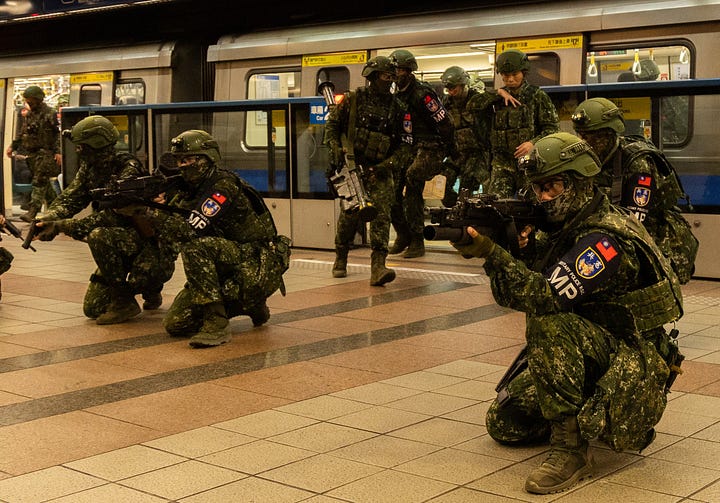
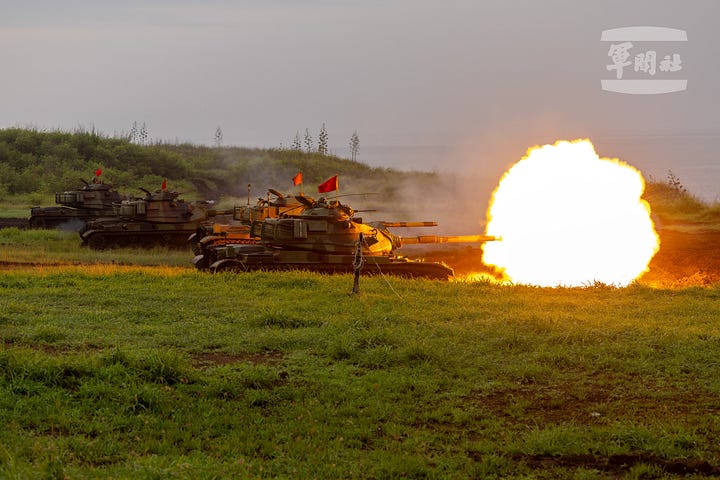
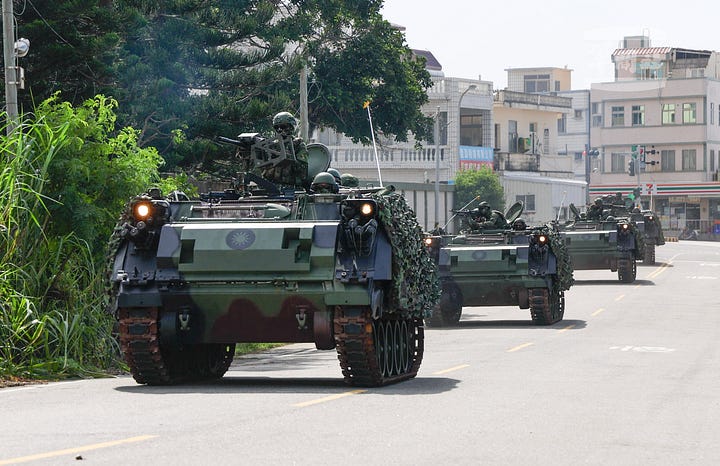
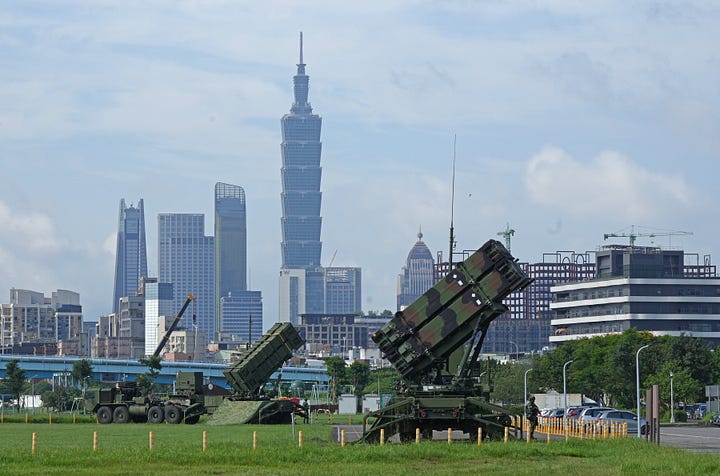
Source: Taiwan Ministry of National Defense
Taiwan’s longest-ever Han Kuang military exercises came to a close Friday morning, capping off 10 days and nine nights of around-the-clock, unscripted drills designed to test the country’s readiness for a full-scale invasion.
Defense Minister Wellington Koo praised the armed forces for their performance — especially troops in central and southern Taiwan who balanced national defense duties with emergency response to Typhoon Danas. That dual role, Koo said, reflected the kind of civil-military coordination Taiwan will need in a real contingency.
This year’s drills were heavier, longer, and more complex than any in the past. Live-fire scenarios spanned beachhead defense, anti-landing operations, deep-penetration combat, and urban warfare. The closing day saw evacuation drills and missile strike simulations in places like Hualien, Penghu, and even Taipei’s MRT Red Line.
For the first time, Taiwan rolled out some of its newest hardware: U.S.-supplied HIMARS, TOW 2B anti-tank missiles, domestically produced land-based Sky Sword II interceptors, and new uncrewed aerial vehicles. The exercises also mobilized the 206th Reserve Brigade — part of an expanded effort to test whether Taiwan’s reserve forces can scale up from battalion-sized to brigade-level operations. Over 22,000 reservists took part.
One friction point: several minor traffic incidents involving military vehicles, a side effect of integrating operations into civilian areas. The ministry acknowledged at least seven such incidents and pledged reviews.
The first half of the drills focused on countering “gray zone” tactics from China — such as drone incursions and cyber threats. The latter half simulated a high-intensity war scenario. And all the while, the PLA kept up pressure: 11 Chinese military aircraft and 11 vessels were spotted near Taiwan during the final 24 hours of the drills, with several aircraft crossing the median line.
The message from this year’s Han Kuang? Taiwan is preparing for every phase of a conflict — from disinformation and disaster response to full-on street-to-street combat.
Beijing Denies H20 Chip Sales Were Part of US-China Trade Deal
China’s Ministry of Commerce is pushing back on claims that the recent U.S. decision to allow NVIDIA to sell its H20 AI chips to China was part of a broader trade deal between the two countries.
Responding to a reporter’s question this week, a ministry spokesperson acknowledged that Beijing and Washington had remained in close contact following their economic talks in London, and that China has been working to implement the “London framework” discussed at those meetings. However, Beijing firmly denied that NVIDIA’s H20 chip approval was a negotiated outcome.
Instead, China emphasized that all export license applications are reviewed “in accordance with the law,” and suggested that the U.S. had unilaterally decided to lift certain restrictions earlier this month — likely as a tactical move, not as part of a formal agreement.
The Ministry took the opportunity to reiterate its long-standing opposition to U.S. export controls, particularly the sweeping measures targeting Huawei’s Ascend chips and broader efforts to curb China’s semiconductor self-sufficiency. Beijing accused Washington of using “administrative power to interfere with fair market competition,” and called on the U.S. to abandon a “zero-sum mindset.”
While the U.S. has reportedly cited concern over China’s progress in developing domestically-produced alternatives to NVIDIA chips, Beijing insists that the solution lies not in containment, but in cooperation.
“We hope the U.S. will work with China to correct these erroneous practices,” the ministry said, “and create a favorable environment for mutually beneficial cooperation — one that also safeguards the stability of the global semiconductor supply chain.”
The messaging underscores a key tension: both sides may be engaging on trade, but each is still interpreting — and presenting — the outcomes very differently.
Now, Rush Doshi, who served as director on the National Security Council under former President Joe Biden, has criticized the move to allow sale of H20 chips to China.
Meanwhile, China’s Commerce Minister Wang Wentao says Beijing wants to bring stability back to its trade ties with the U.S., urging Washington to act “like a major country” and avoid another tariff war.
Speaking to reporters Friday, Wang emphasized the deep economic interdependence between the two nations and said recent talks in Europe showed there’s no need to escalate tensions. With an August 12 deadline looming to finalize a tariff deal, Wang warned that failure could trigger tariffs exceeding 100% — risking fresh supply chain chaos.
“Dialogue, not confrontation, is the way forward,” Wang said, calling for responsible leadership on both sides.
India Considers Easing Chinese Investment Rules
India’s NITI Aayog has proposed allowing Chinese firms to invest up to 24% in Indian companies without government approval, Reuters reports. The move aims to revive flagging foreign investment and comes amid a tentative thaw in India-China ties.
Current rules, imposed after the 2020 border clashes, require all Chinese investments to clear security reviews. Several major deals, including BYD’s $1B EV plan, have stalled as a result. The proposal is under review but any decision is likely months away.
However, similar recommendations have been made by other semi-government bodies in the past, but they haven’t led to a full relaxation of Chinese investment restrictions.
India Stays Cool on Reviving Russia-India-China (RIC) Troika
As Russia and China push to revive the dormant Russia-India-China (RIC) trilateral dialogue, India has so far declined to commit. “No meeting of the RIC format has been agreed to at this point,” a source told Press Trust of India, adding that no scheduling discussions are underway.
The Ministry of External Affairs kept its response neutral, noting the mechanism exists for dialogue on regional and global issues but offering no timeline. The RIC format has been inactive since the 2020 India-China border standoff, and New Delhi’s growing alignment with the Quad has further complicated the trilateral equation.
Despite statements from Moscow and Beijing calling for RIC’s revival, India appears in no rush to rejoin the table — at least for now.
China Slams Canada’s New Steel Tariffs as WTO Violation
The Chinese embassy in Ottawa has sharply criticized Canada’s latest 25% tariff on steel imports containing Chinese-origin material, calling the move a violation of WTO rules and a disruption to global trade.
The backlash follows Prime Minister Mark Carney’s announcement this week that the tariffs will take effect by the end of July. Ottawa says the move is aimed at protecting Canada’s steel industry from indirect dumping, especially after Trump-era U.S. tariffs distorted global markets.
Beijing is warning the decision could derail recent efforts to mend bilateral ties. The embassy said China may adjust its own countermeasures — including tariffs on Canadian food exports — if Ottawa reverses its course.
While Canada’s trade minister says he’s eager to re-engage in talks, China’s message is clear: remove the tariffs, or risk further fallout.
Reads:
Is China’s Military Ready for War? — Foreign Affairs
Janet Yellen on the Challenges of Dealing With China, Trump — and Biden — Wire China


